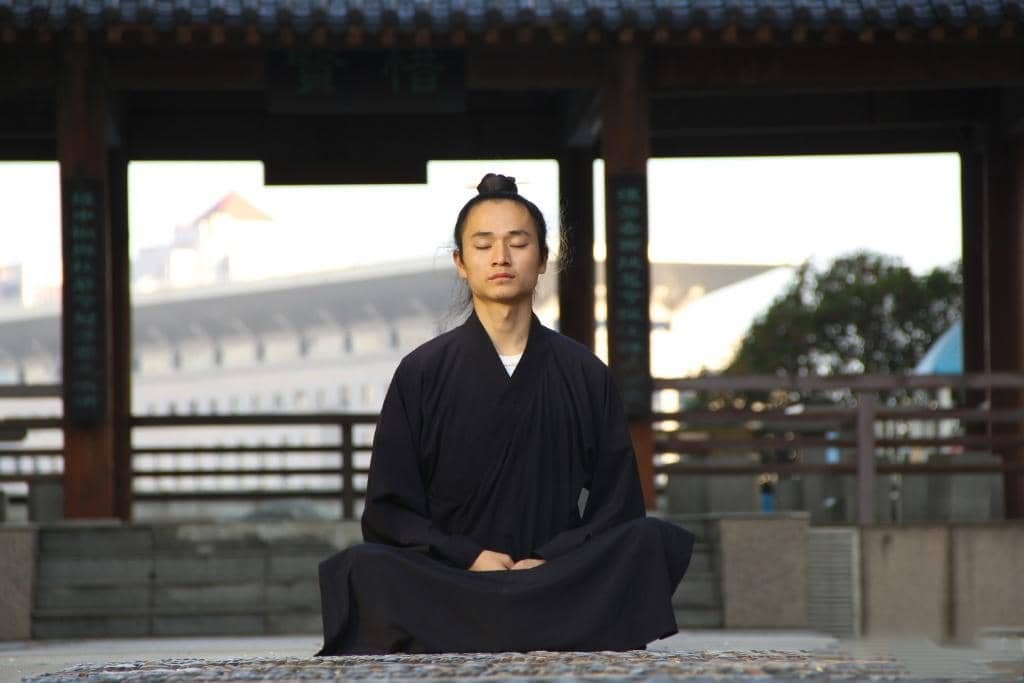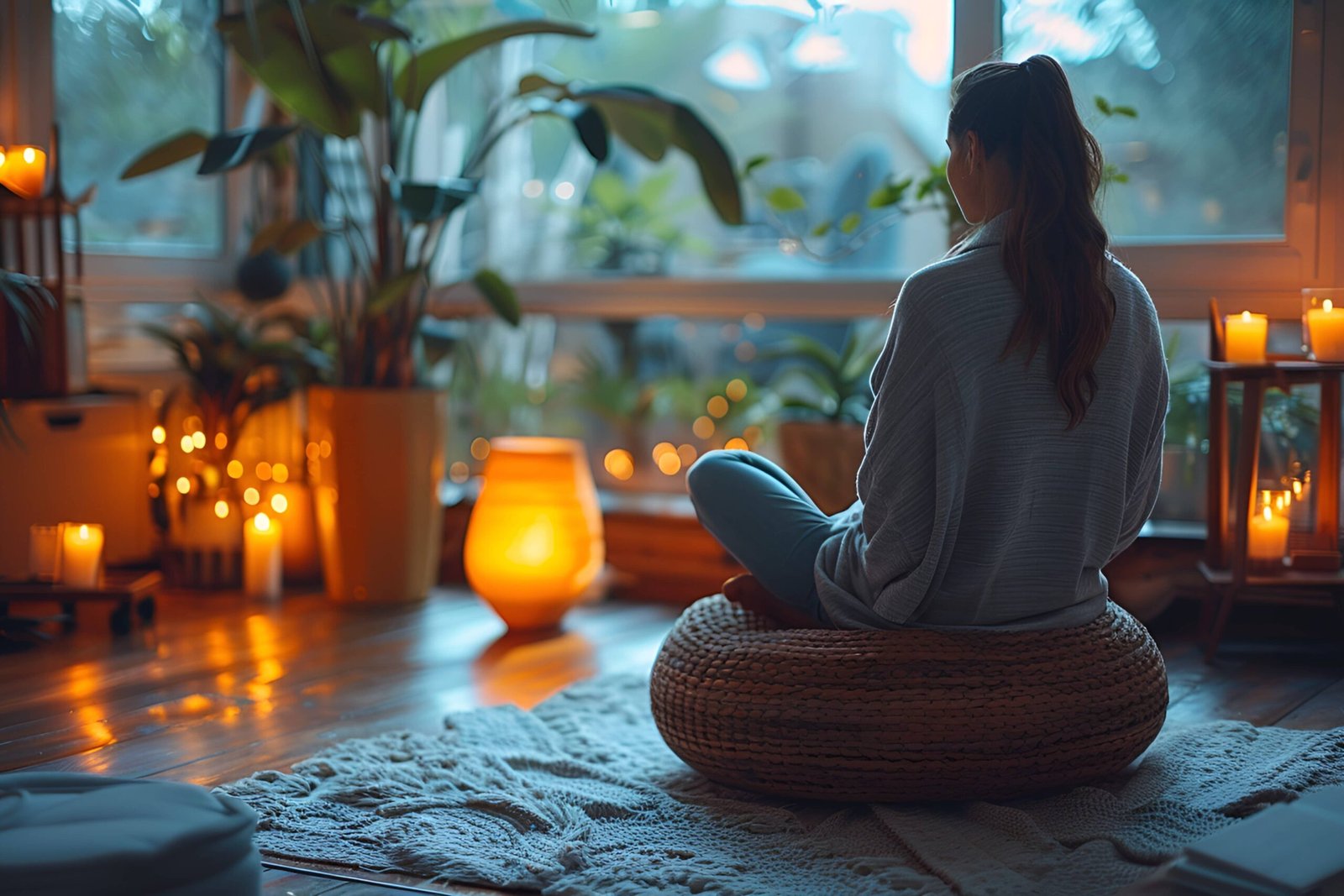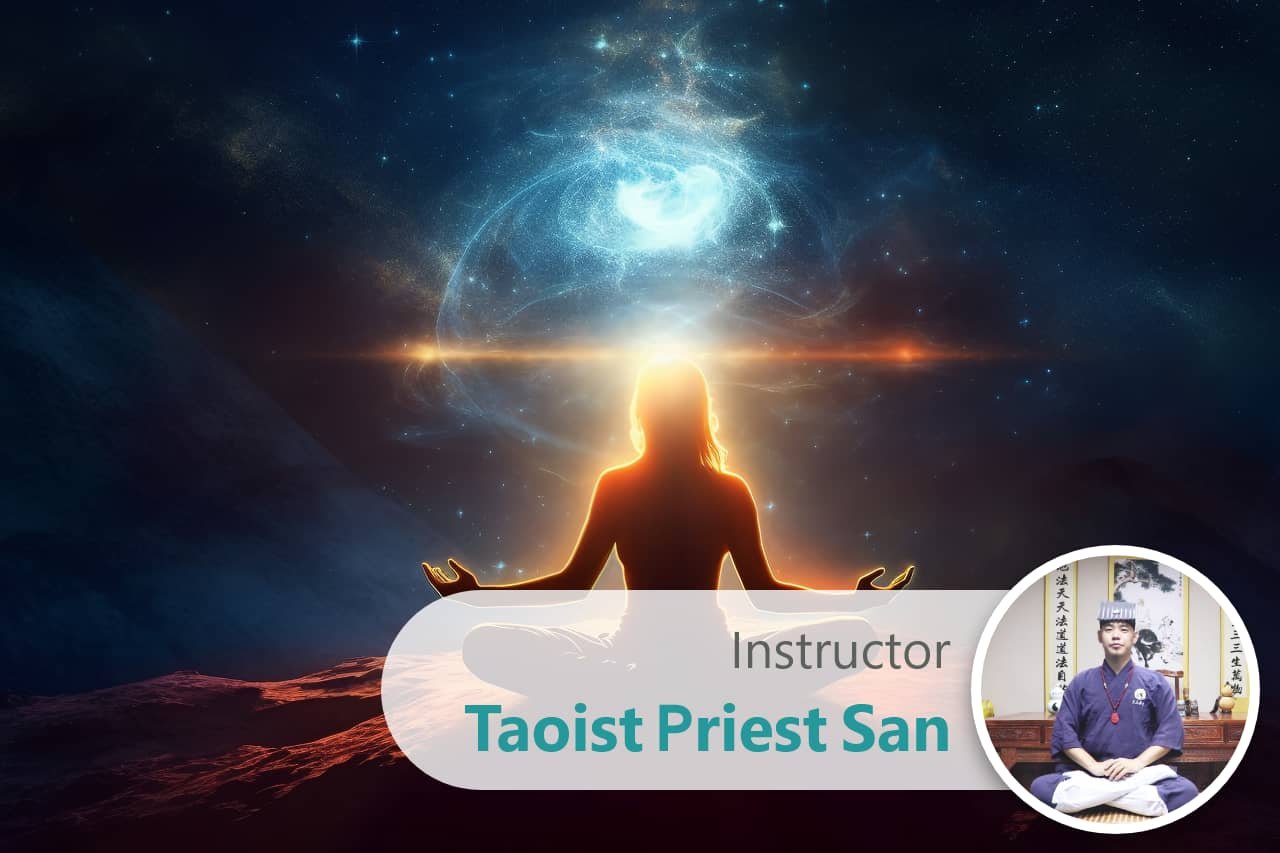How is the Taoist meditation method practiced?
It’s best to find a quiet room for sitting meditation. If that’s not possible, you can use the bedroom. Keep the windows and doors open for good ventilation, but avoid sitting where there’s a draft. It’s better if the door can be closed to prevent disturbances.
When sitting, you can either use a meditation bench or sit on the bed, but a flat surface is ideal. Place blankets or cushions on the seat to ensure softness and comfort for extended sitting.
Before sitting, loosen your clothing to avoid any restriction of muscles and ensure smooth energy flow without obstruction.
The Correct Method Of Taoist Meditation
Posture
Adopt a sitting meditation posture (it is best to avoid lying down here to prevent falling asleep).
The sitting postures can be divided into chair-sitting, loose-leg sitting, half-lotus, and full-lotus positions. Generally, it is best to use the lotus position, but if that’s not possible, you can use the chair-sitting position (sitting on a chair with both feet flat on the ground). When sitting in lotus, you can choose loose, half, or full lotus based on your ability. There’s no need to force yourself into the full-lotus position, as Taoism does not require it (although full lotus is better).
When sitting in lotus, take note of the following points:
- The back half of the hips should be slightly elevated with a cushion or a thin pillow. This helps keep the lower back naturally straight and prevents slouching due to muscle fatigue during prolonged sitting.
- The lower back should be naturally straight. If the back is not straight, the flow of energy through the Ren and Du meridians will be obstructed, which can lead to drowsiness.
- The head should be upright, with the neck straight, and the chin slightly tucked. The tongue should touch the upper palate. Due to daily habits, most people tend to tilt their head to one side, either left or right, and feel as though their head is straight. In reality, it may still be tilted. To ensure proper alignment, you can place a mirror in front of you after sitting to check whether your head is truly upright. This helps correct internal imbalances and improve energy flow.
Mind and Breathing
After sitting properly, don’t rush to close your eyes. First, calm your mind and regulate your breathing. Once you feel relaxed and your breathing becomes steady, slowly close your eyes (either fully or leaving a slight gap for light).
Focus your attention on your breathing, silently counting each breath. For those with weaker bodies, count the inhalations. Each inhalation counts as one, while exhalations are not counted—one full inhale and exhale equals one count. For those who are physically stronger, with high internal heat or a quick temper, count the exhalations. Each exhalation counts as one, without counting the inhalations. Count from one to five, then start over from one, repeating this process continuously as a form of training.
Important Notes
- When counting your breaths, focus on your breathing. Count the breaths silently in your mind, while your ears listen to your breathing. Concentrate fully, with your mind focused, much like a hen brooding over eggs.If distractions arise during the process, immediately bring your attention back and start counting from one again.
- Adjust your breathing to be deep, long, even, slow, and gentle. “Deep and long” means the breath should not be short or hurried but continuous, gradually extending the time taken for each inhale and exhale. Over time, you will feel your breath penetrating deeper into your body, activating the body’s energy flow. “Even” means keeping the pace consistent without sudden changes in speed. “Slow” means breathing should be unhurried, not rushed. “Gentle” means the breath should be soft, almost effortless, without force.
- If you are able to concentrate while counting your breaths, with no distractions or thoughts, and you can enter a meditative state, you may increase the count from one to ten. Gradually, you can extend this to counting from one to thirty. Generally, if you can count from one to thirty without distractions, you’ve mastered the first step of calming the mind and stopping thoughts, and you can move on to the second step.
- Be mindful of the following three issues during practice:
First, drowsiness.
Falling into a sleepy state while meditating is common, but it’s easy to mistake drowsiness for entering a calm, meditative state. True meditation is characterized by a clear mind and a light, refreshed feeling, unlike drowsiness, which is heavy and unclear. There are three common causes of drowsiness:
- Imbalanced diet: Eating overly greasy food or too much before meditation can lead to drowsiness. It’s best to eat light and avoid overeating.
- Incorrect posture: Sometimes, as you meditate, your body slouches, with the head lowering and the back bending. This posture easily leads to drowsiness.
- Fatigue: Overexerting yourself before meditation can result in physical and mental fatigue. If this happens, it’s better to take a short nap of about 30 minutes to recover before practicing.
Second, distraction.
Distractions occur when your mind keeps wandering, thinking about random things during breath counting. Common causes of distraction include:
- Imbalanced diet: Eating stimulating foods such as chili, onions, or garlic can cause distraction. It’s best to limit spicy foods.
- Emotional imbalance: Participating in activities that cause emotional excitement, such as watching thrilling movies, reading intense novels, or engaging in heated debates or arguments. It’s better to engage in less stimulating activities, such as reading Taoist scriptures or doing light household chores.
- Irregular breathing: If the breath is not smooth and steady, it can also lead to distraction.
Third, phenomena during practice.
If you experience any phenomena such as lights or images appearing before your eyes, or physical sensations such as soreness, numbness, swelling, pain, heaviness, coolness, ants crawling, twitching, or muscle shaking, these are normal occurrences. Simply allow them to happen naturally and don’t fixate on them.
Related Kung Fu
Ancient Taoist Contemplative Meditation(10 Lessons)
This meditation technique is an authentic Taoist practice, a heart-mind secret based on ancient Chinese wisdom. The technique is simple and easy to learn, yet delivers outstanding results.


